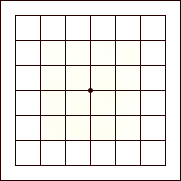 |
 |
|
Go
is played by placing the stones on empty intersections of the lines.
At the start of the game, the board is empty. Black moves first, and
the players alternate in placing stones until all the intersections
are either occupied by stones or completely surrounded by one color. Diagrams 1 and 2 show how stones are placed. Once a stone is placed on the board, it stays in that place and does not move around later (unless it is captured and removed from the board). In general you may play on any empty point anywhere on the board. There are only two exceptions, which you will see in the following pages. At any time a player may pass (not make a move). Once all the territory has been surrounded, a player may pass, as placing a stone in surrounded territory will cost him a point. When both players have passed, the game is finished and the score is counted. |
|
|
|
|
|
|
|
|
Stones
of the same color on immediately adjacent points are said to be connected,
or joined. The connection can be horizontol or vertical, but not diagonal
- the connection is along the lines. This becomes important in capturing
stones, which will be described on the next page.
In Diagram 3, all five Black stones are connected and are a single group. However, the five White stones are not connected to each other.
Diagram 4 is another illustration of connection. There are four groups of two stones, each connected by a straight line. The two White groups and the two Black groups are cut off from each other at a diagonal. Diagram 5 shows a similar cut in a completed game. Again there are two White groups and two Black groups cut off from each other. |
|
[Territory] [Contents - Learning Go] [Capturing]
|